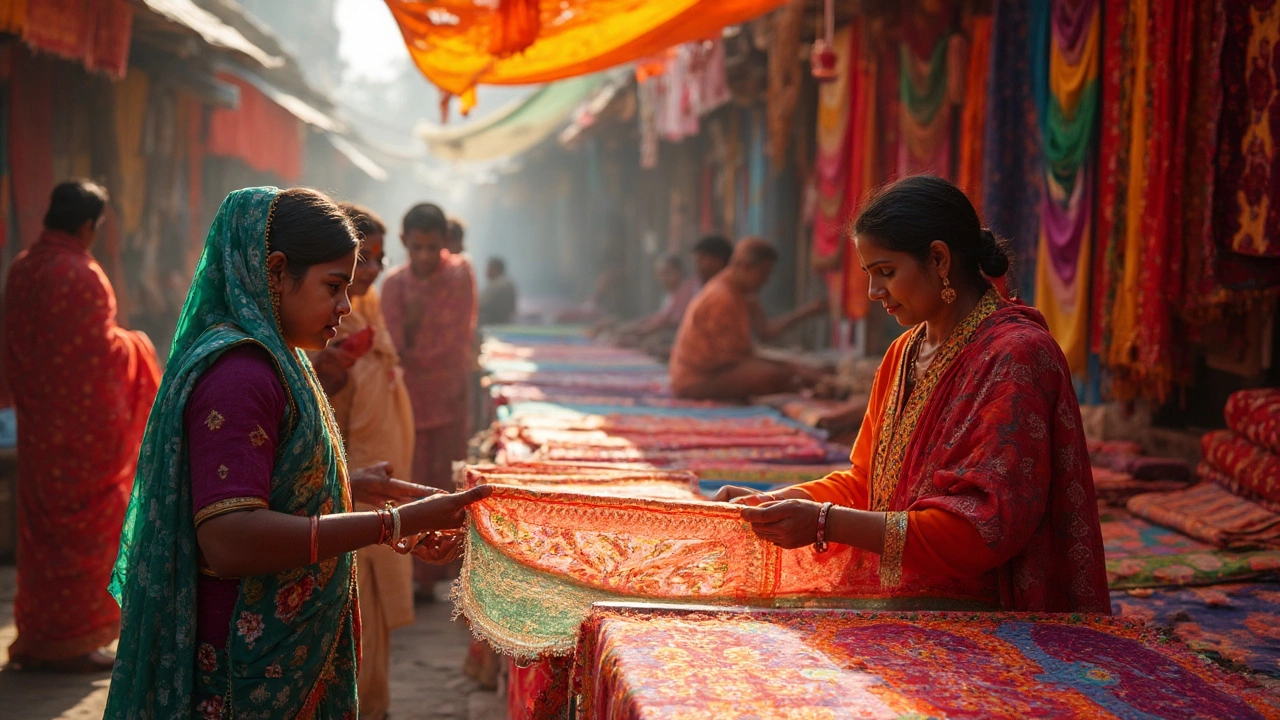Gujarat Fabrics – What Makes the State a Textile Powerhouse
When you think of Indian textiles, Gujarat pops up fast. The state mixes centuries‑old craft with modern mills, so you get everything from hand‑woven cotton to high‑tech synthetic blends. Cities like Surat, Ahmedabad, and Rajkot host thousands of looms, and they ship fabrics across the country and abroad. That’s why buyers, designers, and investors keep pointing at Gujarat when they need reliable, affordable material.
What really drives the market? First, the sheer volume of cotton grown in nearby regions. Gujarat’s climate gives a long growing season, so raw cotton is cheap and steady. Second, the government offers tax breaks and easy land access for textile projects. Third, a deep pool of skilled workers means factories can scale quickly without losing quality. Put those three together, and you’ve got a fabric ecosystem that can handle small boutique orders and massive export contracts alike.
Starting a Fabric Business in Gujarat
If you’re thinking about setting up shop, the biggest question is cost. A basic textile unit can start with a few lakh rupees for a small space, basic looms, and initial raw material. Add in land registration, electricity connections, and labor, and you’re looking at roughly 15‑20 lakh for a modest operation. Bigger players who want to produce denim or blended fabrics often invest 1‑2 crore for advanced machinery, automated cutting, and quality‑control labs.Getting the paperwork done is straightforward if you follow the local steps: register the business, apply for the Gujarat Industrial Development Corporation (GIDC) plot, and secure the necessary environmental clearances. Most entrepreneurs find that a local consultant speeds up the process, especially when dealing with waste‑water treatment norms for dyeing units.
Once the plant is ready, focus on sourcing raw cotton or synthetic yarn. Local traders in Surat can offer competitive rates, and many have credit facilities for new buyers. Keep an eye on the price trends – cotton can swing a lot season to season, so a short‑term storage plan helps you lock in good rates without over‑stocking.
Finding Reliable Fabric Suppliers in Gujarat
Even if you aren’t manufacturing yourself, Gujarat is a goldmine for sourcing fabrics. The key is to visit the major market hubs – Surat’s textile market, Ahmedabad’s textile center, and the Rajkot cloth bazaar. Walk the aisles, feel the material, and chat with multiple vendors before you commit.
Ask for sample swatches and test them for colorfastness, shrinkage, and thread count. A good supplier will provide a small batch at a lower price for you to run a trial run. Also, check if they have certifications like ISO 9001 or compliance with the Garment Export Promotion Council (GEPC) standards – those are signs they take quality seriously.
When you sign a contract, make sure the payment terms are clear. Many Gujarat traders accept a 30‑day credit line for first‑time buyers, but they may ask for a small advance on larger orders. Keep communication open, and set up a regular review of delivery schedules to avoid surprises.
In short, Gujarat’s fabric scene balances tradition and technology, making it a solid choice whether you want to launch a new textile unit or simply source high‑quality material. With the right research, realistic budgeting, and a few on‑the‑ground visits, you can tap into the state’s strengths and keep your fabric business moving forward.

Gujarat Famous Cloth: What Makes Its Textiles Stand Out
Gujarat is a powerhouse in India’s textile scene, known for unique fabrics like Bandhani, Patola, and Ajrakh. The state’s textile heritage stretches back centuries, combining traditional skills with modern innovations. Artisans use age-old methods that give every piece special character and quality. Today, Gujarat’s textiles support entire communities and attract buyers worldwide. If you want to understand what makes Gujarat’s cloth unique—and how to spot the real deal—here’s what you should know.
